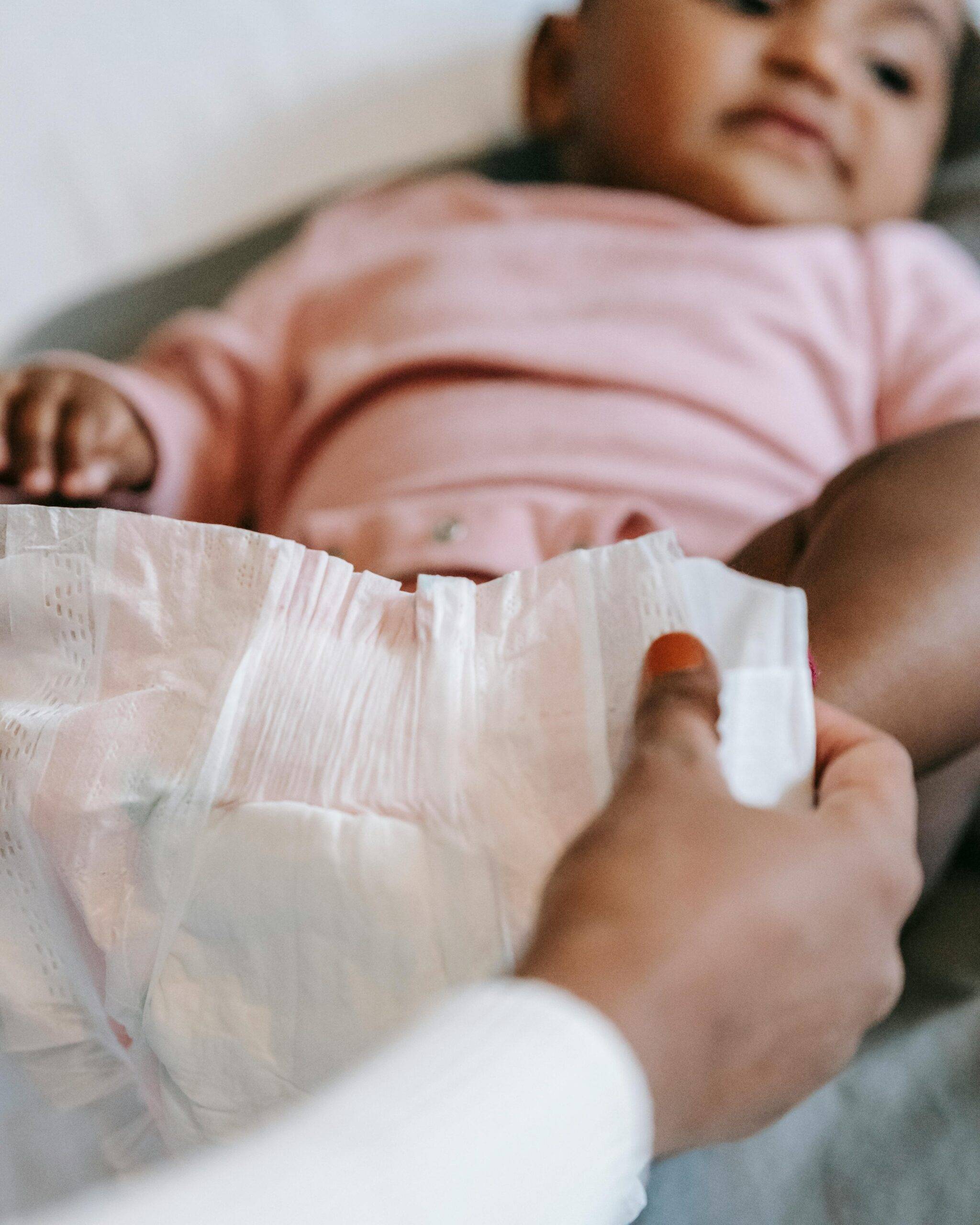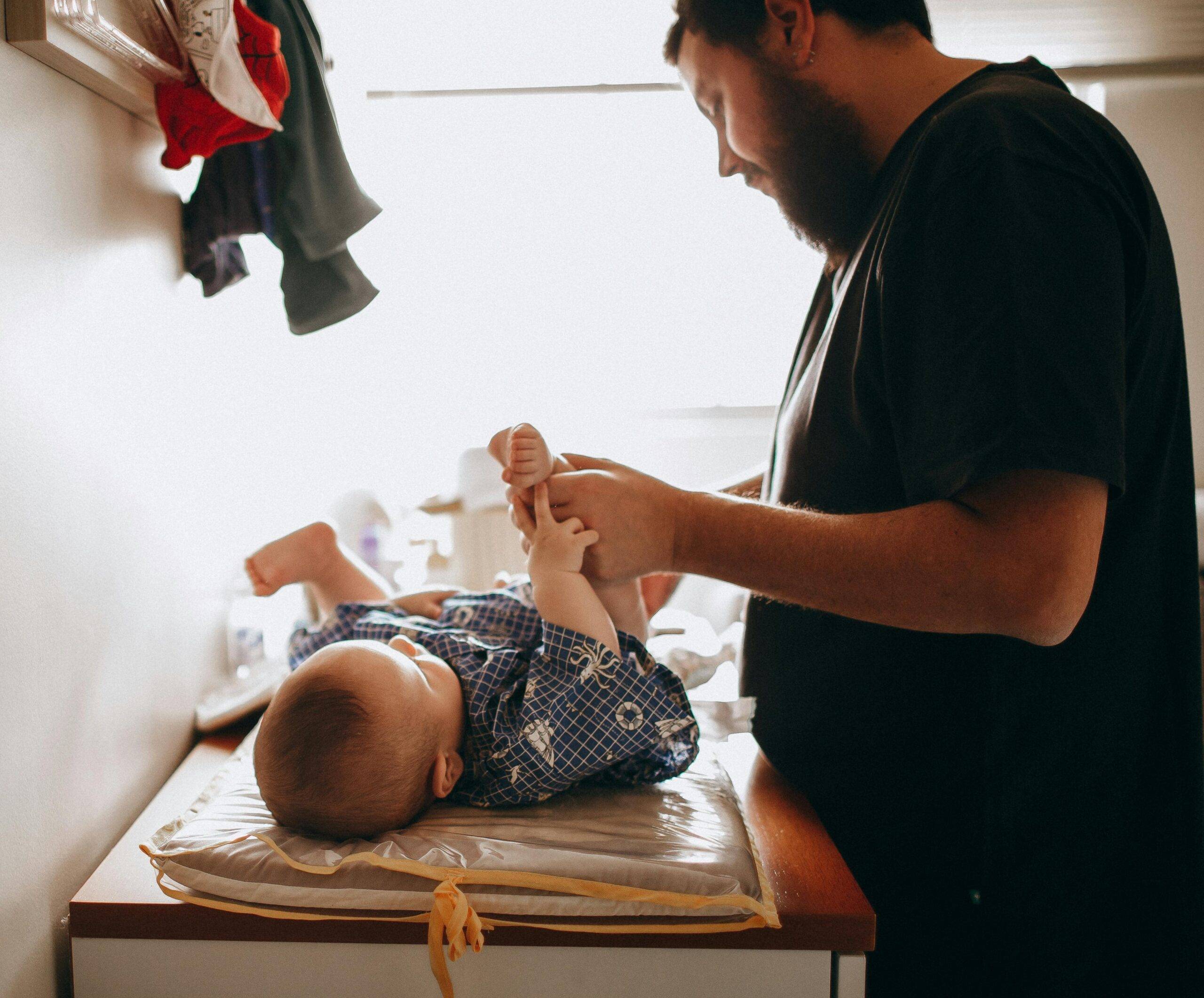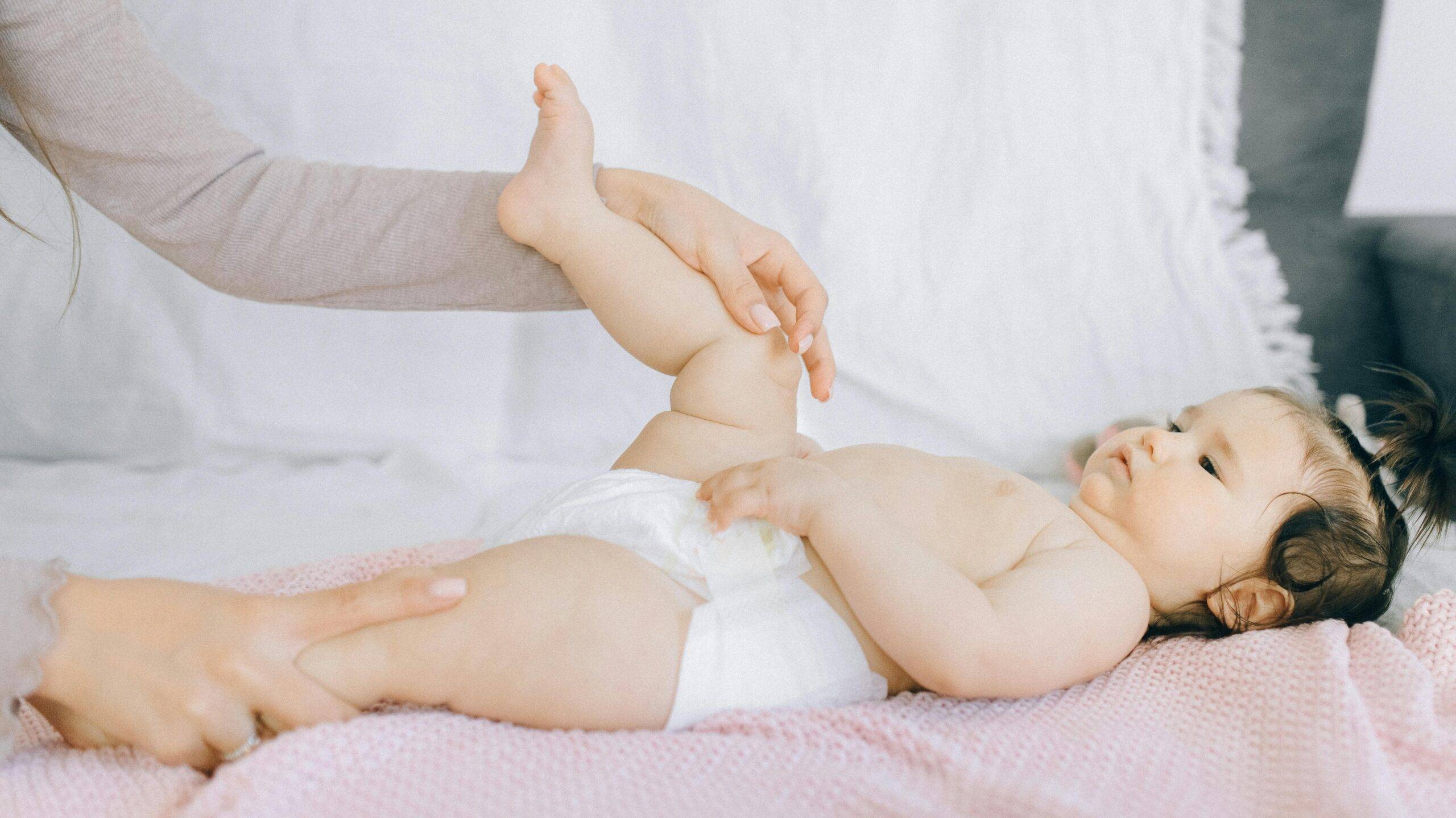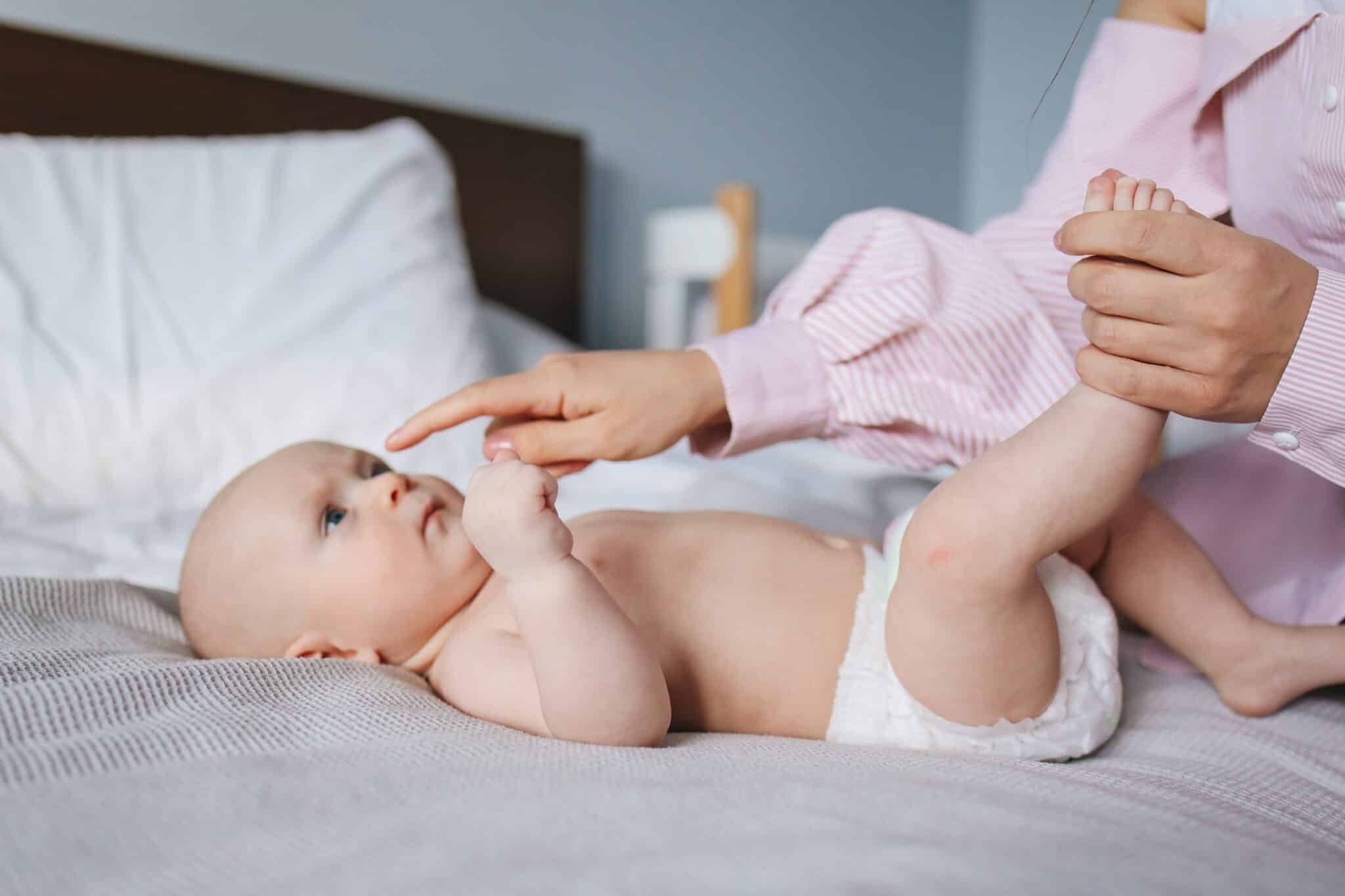When Diaper Rash Looks Like a Burn
Few things are more upsetting for parents than seeing their baby in pain. When a diaper rash becomes severe, it can look almost like a burn—raw, bright red, and even shiny or wet. This type of rash can cause your little one to cry during diaper changes, fuss more than usual, or have trouble sleeping at night.

This kind of diaper rash isn’t just uncomfortable—it can also be a sign that your baby’s skin needs quick and gentle care. The good news? With the right steps, severe diaper rash can heal fast and fully. In this guide, we’ll walk you through:
- What causes these “burn-like” diaper rashes
- How to recognize the signs of serious irritation
- The most effective treatments
- And when to call your pediatrician.
You’re not alone, and there is help. Let’s dive in and get your baby the comfort they deserve.
What Causes Severe (Burn-Like) Diaper Rash?
A diaper rash becomes severe when the skin is exposed to irritants for too long or when an infection sets in. Here are the most common culprits:
1. Prolonged Exposure to Wetness and Feces
Urine and stool contain substances like ammonia and digestive enzymes that can irritate the skin. When a diaper isn’t changed promptly, these irritants can break down the skin’s protective barrier, leading to inflammation and rash.

2. Friction
Tight diapers or constant rubbing against the diaper material can cause chafing. This friction damages the skin, making it more susceptible to rashes.
3. Delayed Treatment
Ignoring a mild rash can allow it to worsen. Without proper care, the skin can become more inflamed and even develop open sores.
4. Yeast Infection
A yeast called Candida thrives in warm, moist environments like diapers. If a regular rash doesn’t improve with standard treatments, it might be a yeast infection, which requires antifungal medication.
5. Bacterial Infection
Broken skin can become infected with bacteria, leading to more severe symptoms like pus-filled blisters or yellowish crusts. This type of infection needs medical attention and possibly antibiotics.
6. Allergic Reaction
Some babies react to ingredients in diapers, wipes, or creams. An allergic reaction can cause redness, swelling, and discomfort.
Recognizing Severe Diaper Rash
Not all diaper rashes are the same. While some go away with basic care, others can quickly turn painful and need more attention. Knowing the signs of a severe or burn-like diaper rash can help you act fast and prevent complications. Here are the key symptoms to watch for:
🔴 Intense Redness
If your baby’s skin is bright red and inflamed, that’s a sign the rash is more than mild irritation. Severe redness usually means the skin is very irritated and needs fast relief.
💧 Raw or Weepy Skin
The rash may look shiny, wet, or even ooze clear fluid. This means the outer layer of skin has been broken down, and the area is highly sensitive.
❗ Open Sores
When diaper rash gets worse, it can cause ulcers or open wounds. These are not only painful but can also allow infections to set in.
😢 Obvious Discomfort
Is your baby crying during diaper changes, squirming in discomfort, or waking more often at night? These are signs that the rash is hurting and needs quick care.
🔄 Spreading Beyond the Diaper Area
If the rash begins to spread to the thighs, belly, or folds of the skin, it could be a sign of a yeast or bacterial infection—or that the irritation is becoming widespread.
When you notice any of these signs, it’s time to take action with soothing care and, if needed, medical treatment. The sooner you respond, the sooner your baby can feel better.
Immediate Steps to Soothe Severe Diaper Rash Fast
When your baby has a diaper rash that looks red, raw, or even like a burn, every moment matters. Quick and gentle care can help soothe the pain and speed up healing. Here are the best steps to take right away:
1. Gentle Cleaning
Use lukewarm water and a soft cloth or squirt bottle to gently clean the diaper area.
- Avoid baby wipes that have alcohol, fragrance, or harsh chemicals—they can make the rash worse.
- If needed, use plain water or wipes made for sensitive skin.
💡 Think: less scrubbing, more soothing.
2. Pat the Area Dry (don’t rub!)
After cleaning, gently pat the skin dry with a clean, soft towel.
- Never rub the area, as this can irritate already inflamed skin.
- You can even let the skin air-dry for a few minutes before applying cream or putting on a new diaper.
3. Maximize Diaper-Free Time
Let your baby’s bottom breathe as much as possible.
- Place them on a clean towel or waterproof pad without a diaper.
- Do this several times a day, even for just 10–15 minutes at a time.
🌬️ Fresh air is one of the best healers for sore skin!
4. Change Diapers Frequently
Keep the area clean and dry by changing diapers right after they become wet or soiled.
- Even if you normally use ultra-absorbent diapers, check them more often during a rash.
- Consider switching to breathable or cloth diapers temporarily if irritation continues.
These first steps are simple but powerful. The goal is to remove irritants, protect the skin, and let nature (with a little help) do the healing.
Best Treatment Options (with pediatric guidance)
When diaper rash becomes severe—especially if it looks like a burn or causes your baby a lot of pain—simple home remedies may not be enough. In these cases, it’s best to talk to your pediatrician. They can recommend the right treatments to heal your baby’s skin quickly and safely. Here are some of the most effective treatment options for serious diaper rash:
1. Thick Barrier Creams
Barrier creams are the first line of defense. Look for ones with zinc oxide or petroleum jelly. These act like a shield, keeping moisture and irritants away from your baby’s delicate skin.
- Apply a thick layer during every diaper change.
- Don’t scrub it off completely each time—gently remove only what’s soiled and add a fresh layer on top.
💡 Tip: Think of it like frosting a cake—thicker is better when protecting raw skin!
2. Antifungal Cream
If your baby’s rash is bright red, involves skin folds, or has small red bumps nearby (called satellite lesions), it could be a yeast infection. Yeast thrives in warm, damp areas—just like inside a diaper.
- Common creams include clotrimazole or nystatin.
- These are usually applied under the barrier cream.
- Always use as directed by your pediatrician.
3. Topical Steroid Cream
For redness and swelling that won’t calm down, your doctor might suggest a mild steroid cream (like hydrocortisone) for short-term use.
- These creams reduce inflammation and make your baby more comfortable.
- Use only under medical supervision, as overuse can thin the skin.
4. Antibiotic Cream
If the rash becomes infected with bacteria, you may see yellow crusts, pus, or blisters. This needs a prescription antibiotic ointment.
- Apply as directed by your doctor.
- Bacterial infections can worsen quickly, so don’t delay getting help.
5. Pain Relief
If your baby seems in pain—crying more, not sleeping, or reacting strongly to diaper changes—your pediatrician may recommend a safe dose of infant acetaminophen.
- Always check the dosage and follow your doctor’s advice.
- Never give medicine without medical guidance.
These treatments work best when combined with gentle care, lots of diaper-free time, and frequent changes. If you’re ever unsure, trust your gut—and call your pediatrician.
When to Contact Your Pediatrician: Know the Signs
Sometimes, even the best home care isn’t enough. If your baby’s rash is not getting better—or seems to be getting worse—it’s important to get professional help. Call your pediatrician if you notice any of the following:
- The rash is very severe, with open sores, oozing skin, or signs of infection like pus or yellow crusts.
- There’s no improvement after 2-3 days of good home care, including frequent diaper changes and barrier creams.
- Your baby develops a fever, which could mean the rash is part of a bigger infection.
- You suspect a yeast or bacterial infection—especially if the rash looks bright red, is spreading fast, or has bumps or blisters.
Your pediatrician can provide the right treatment quickly—like antifungal, steroid, or antibiotic creams—to help your baby heal faster and feel more comfortable.
Healing Your Baby’s Skin with Confidence and Care

Severe diaper rash can feel scary—but you’re not alone, and it doesn’t have to last long. With fast and gentle care, your baby’s skin can heal beautifully. The most important things you can do are simple: clean gently, keep the area dry, use thick barrier creams, and give your baby as much diaper-free time as possible.
But remember—some rashes need more help. If your baby’s rash isn’t improving in a day or two, or if it seems painful or infected, it’s time to call your pediatrician. The sooner you get help, the sooner your little one can feel better.
Want more tips for keeping your baby’s skin healthy? Check out this post on Baby Skincare 101: How to Preserve Your Infant’s Sensitive Skin and The Top 10 Diaper Dilemmas for New Parents on Omegapediatrics.com. You’ve got this—and we’re here to help every step of the way.



